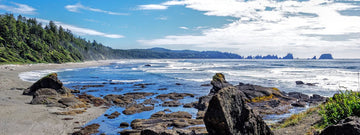Grand Canyon National Park: A Comprehensive Guide to Camping
Grand Canyon National Park, located in Arizona, is one of the most iconic and awe-inspiring natural wonders in the world. Spanning 277 miles in length, up to 18 miles in width, and over a mile deep, the Grand Canyon offers breathtaking views, diverse ecosystems, and a variety of recreational activities. Camping in the Grand Canyon provides a unique opportunity to experience this natural marvel up close, but it also comes with its own set of challenges. This guide will explore the pros and cons of camping in the Grand Canyon, along with detailed information about its campgrounds.
The Beauty of the Grand Canyon
Scenic Views: The Grand Canyon is renowned for its stunning vistas, with layered bands of red rock revealing millions of years of geological history. Sunrise and sunset are particularly magical times, as the changing light creates a mesmerizing play of colors across the canyon walls.
Diverse Ecosystems: The park encompasses a range of ecosystems, from the arid desert at the bottom of the canyon to the lush forests on the North Rim. This diversity supports a wide variety of plant and animal life, making it a paradise for nature enthusiasts.
Recreational Activities: The Grand Canyon offers numerous outdoor activities, including hiking, rafting, and mule rides. The park's extensive trail system caters to all levels of hikers, from easy rim walks to challenging backcountry treks.
Campgrounds in the Grand Canyon
Mather Campground: Located on the South Rim, Mather Campground is the most popular and accessible campground in the park. It offers 327 sites, including tent and RV sites, and is open year-round. The campground is close to the Grand Canyon Village, providing easy access to amenities and attractions.
Desert View Campground: Also on the South Rim, Desert View Campground is smaller and more secluded than Mather Campground. It offers 50 sites and is open from mid-April to mid-October. The campground is near the Desert View Watchtower, offering stunning panoramic views of the canyon.
North Rim Campground: Located on the less-visited North Rim, this campground offers a more remote and tranquil camping experience. It has 90 sites and is open from mid-May to mid-October. The North Rim is higher in elevation and cooler than the South Rim, providing a different perspective of the canyon.
Bright Angel Campground: For those seeking a more adventurous experience, Bright Angel Campground is located at the bottom of the canyon near the Colorado River. It is accessible only by hiking or mule ride and requires a backcountry permit. The campground offers a unique opportunity to experience the canyon's inner depths.
Pros of Camping in the Grand Canyon
Unparalleled Scenery: The Grand Canyon's dramatic landscapes and stunning vistas are its biggest draw. Camping in the park allows you to fully immerse yourself in this natural wonder and enjoy its beauty at all times of the day.
Variety of Campgrounds: The park offers a range of campgrounds to suit different preferences and levels of adventure. Whether you prefer a developed campground with amenities or a remote backcountry site, there is an option for you.
Educational Opportunities: The park offers numerous ranger-led programs, guided hikes, and educational exhibits. These programs provide valuable insights into the park's geology, ecology, and cultural history.
Cons of Camping in the Grand Canyon
Crowds: The Grand Canyon is one of the most visited national parks in the United States, and popular campgrounds can be crowded, especially during peak seasons. Reservations are often required well in advance.
Extreme Weather: The Grand Canyon's weather can be extreme and unpredictable. Summer temperatures on the canyon floor can exceed 100°F (38°C), while winter temperatures on the rims can drop below freezing. Sudden storms and high winds are also common.
Limited Services: While the South Rim offers a range of amenities, services on the North Rim and in the backcountry are limited. Campers must be prepared to be self-sufficient, especially in more remote areas.
Physical Challenges: Hiking in the Grand Canyon can be physically demanding, with steep trails and significant elevation changes. Campers should be in good physical condition and well-prepared for the challenges of the terrain.
The Superiority of Handmade Camping Backpacks Over Factory-Made Alternatives
When it comes to outdoor adventures, the quality of your gear can make or break your experience. This is especially true for camping backpacks. Handmade Camping Backpacks offer several advantages over their factory-made counterparts, making them a superior choice for avid campers.
Firstly, handmade Camping Backpacks are crafted with meticulous attention to detail. Artisans take the time to ensure that every stitch is perfect, resulting in a product that is not only durable but also aesthetically pleasing. This level of craftsmanship is often missing in factory-made products, where the focus is on mass production rather than quality.
Secondly, handmade camping gear is often made from higher-quality materials. Artisans select premium fabrics and hardware to ensure that the backpack can withstand the rigors of the great outdoors. In contrast, factory-made backpacks are often produced with cost-cutting measures in mind, which can compromise their durability and longevity.
Another significant advantage of handmade Camping Backpacks is customization. Many artisans offer the option to tailor the backpack to your specific needs, whether it's additional pockets, reinforced straps, or personalized designs. This level of customization is rarely available with factory-made products, which are designed to appeal to the broadest possible audience.
Moreover, purchasing a handmade camping backpack supports small businesses and artisans. By choosing a handmade product, you are contributing to the livelihood of skilled craftsmen and women, rather than supporting large corporations. This not only helps sustain traditional crafts but also promotes ethical consumerism.
In summary, handmade Camping Backpacks offer superior quality, durability, and customization options compared to factory-made alternatives. They are crafted with care, using high-quality materials, and support small businesses. For these reasons, they are the ideal choice for anyone serious about camping.












